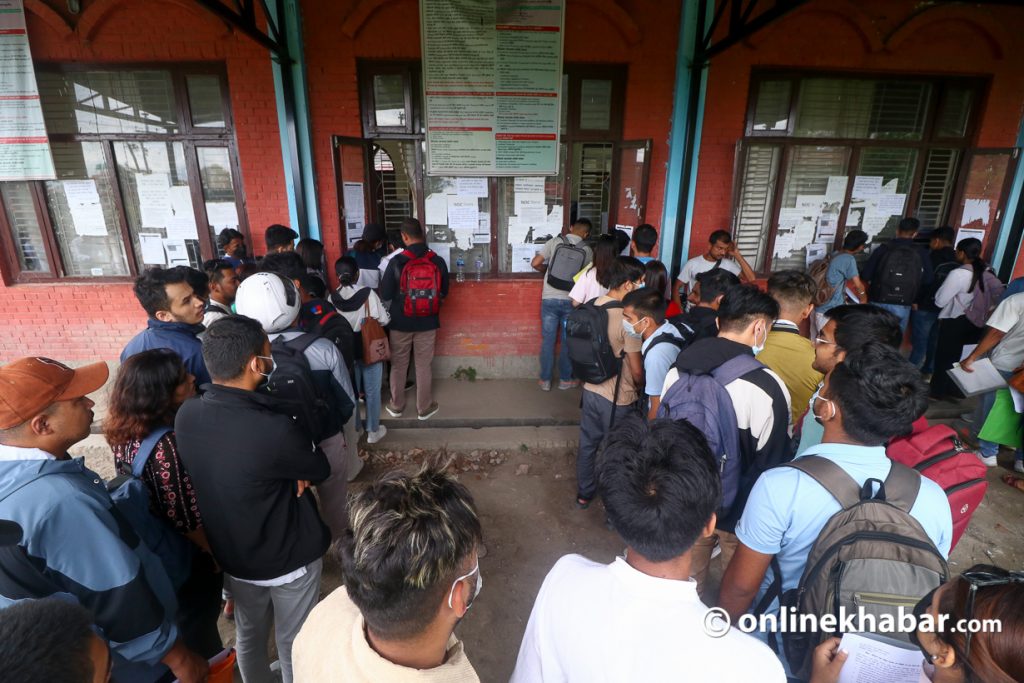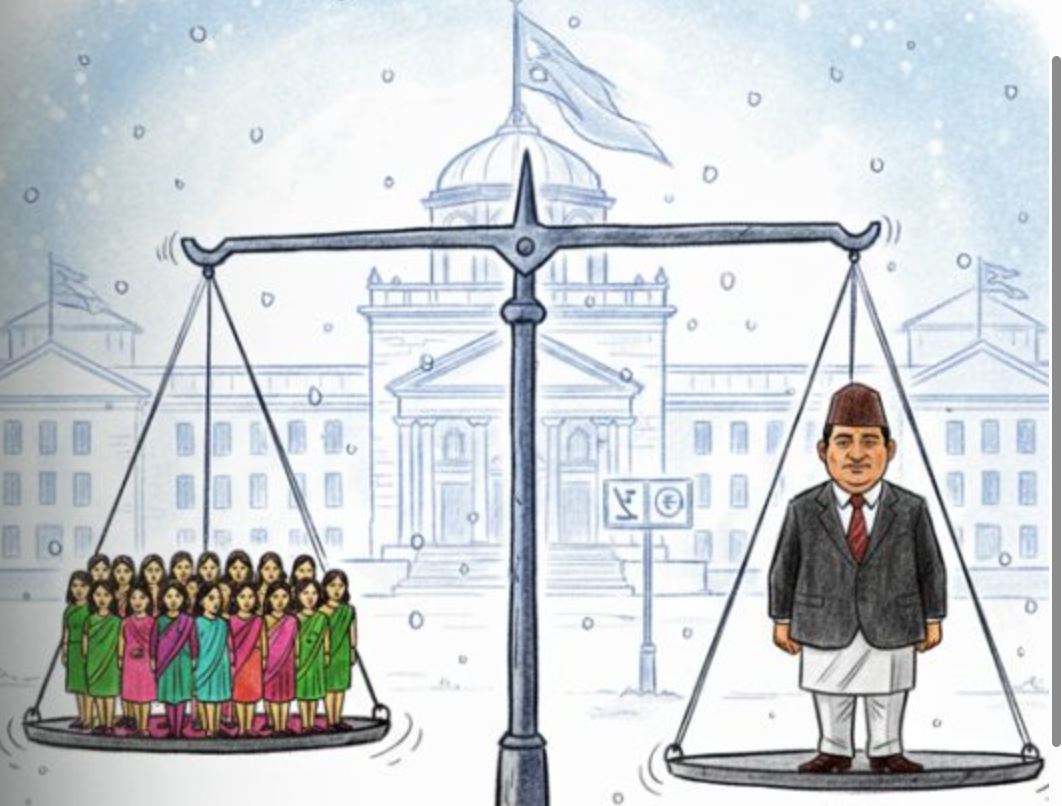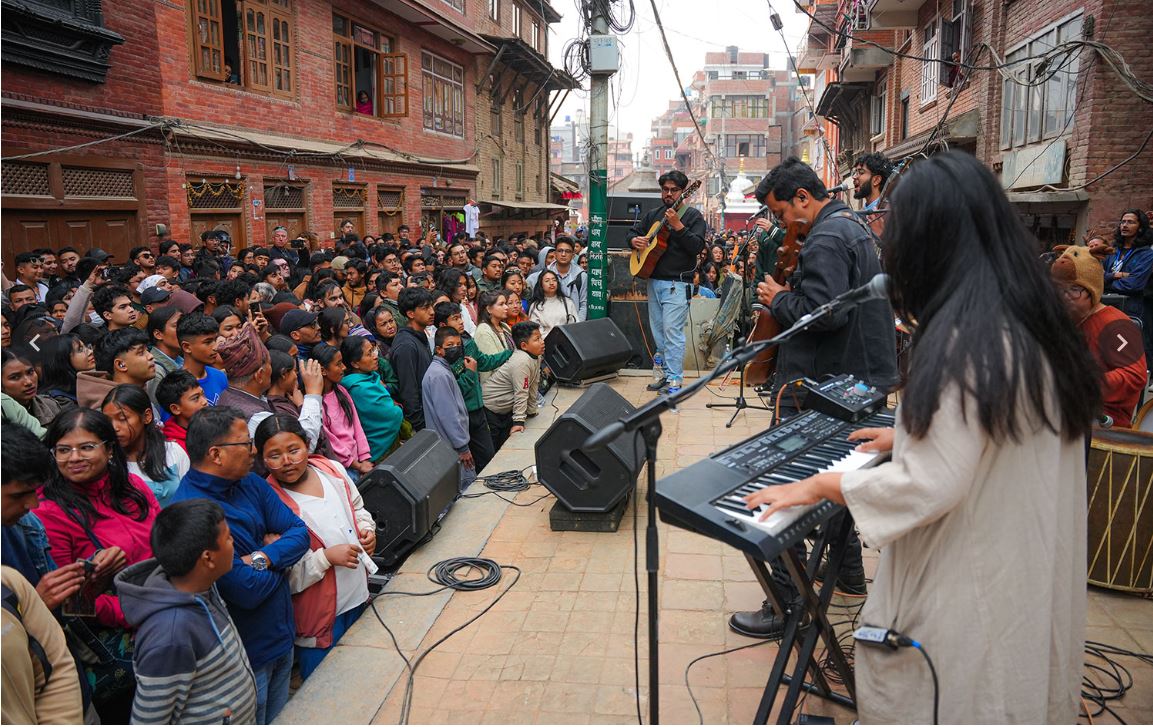
It has been rarely acknowledged that the loss of inspiration has significantly contributed to the desire for exodus among the young generation in Nepal. Yes, there are limited job and economic opportunities, an unfriendly business environment, a pathetic political condition, and needless social pressures in Nepal.
In addition to these factors, it’s important to recognise that a significant number of the younger generation from Nepal look up to, aspire to, and measure their possibilities and standards of achievement based on people in or from foreign countries.
Due to global influences, many of our traditional myths, family values, idols, and social aspirations have become outdated for the younger generation. This is why, the young generation is no longer committed to traditional religious morality or maintaining family traditions.
Similarly, the young generation does not feel connected with old nationalistic narratives like a land of abundant water, natural beauty, herbal and electricity potentials and unbound touristic opportunities. In addition, most youngsters do not find much utility in historical narratives like Lord Buddha was born in Nepal, goddess Sita was the daughter of Nepal or tales of war and bravery.
In a society where existing symbols of inspiration become uninspiring in our everyday lives, people find no value in becoming trustworthy, engaging, ethical, and self-sacrificing. Here, our political, spiritual, educational, and social institutions and their leaders have failed to inspire the young generation with a sense of purpose or a reason that it is possible to dream, stay, struggle, and make it in Nepal.
Existing sources of inspiration have become outdated

Let’s take some examples to observe how our existing sources of inspiration have become gradually irrelevant and obsolete for the young generation. For example, Mayor Balen Shah of Kathmandu, considering Sita a national figure of Nepal, decided to ban a movie in Kathmandu when it claimed that Sita was the daughter of Bharat.
In an era when the gender roles within marriage have changed, I am sure even Balen Shah would not dare impose the ideals of Sita on the daughters of Kathmandu. Many women in Kathmandu would not feel comfortable if they have to go through a stringent test for chastity just because they have been away from their husbands for some time. As a result, there is nothing inspirational or socially transformative about this political gimmick by Balen Shah.
If Sita was really an inspirational figure for Balen Shah, he would also raise concerns about movies where the representation of women contradicts the ideal image of women as prescribed in Hindu religious texts.
Similarly, in Nepal, the people hold this fact in high esteem: the Buddha was born in Nepal. However, the rampant corruption, lust for material exuberance, social discrimination, and moral degradation in the political and public spheres indicate that this historical fact has not inspired us Nepalis.
We have not assimilated the teachings of Buddha to become better human beings, make sustainable lifestyle decisions, improve our ethical behaviour, or become aware of the suffering of other people.
Moreover, for many years in Nepal, at least in the political sphere, the five godheads of communism (Marx, Engels, Lenin, Stalin, and Mao) provided some inspiration to youth for revolution. However, after the end of the decade-long revolution, this current generation has gradually realised that the hallowed dreams of communist utopia have only resulted in corruption, the cult of personality, crony capitalism, nepotism, and favouritism. Thus, their zeal and romance for the impending rebellion among the young generation have simply evaporated.
Among the best minds and educated classes in Nepal, there is still an aspiration for a government job and making a house in the Kathmandu valley. But the nature of government jobs in Nepal has remained rather rigid, hierarchical, without proper performance-based recognition, riddled with corruption of character, and tarnished by political influence. Also, the so-called best minds of the bureaucracy in Nepal have always been too self-centred, only concerned about their own progress, family, and wealth accumulation.
As a result, many educated people with self-respect and independent thinking have left Nepal, seeking employment in foreign destinations where there is intellectual freedom and higher earnings without corruption.
Need for a new inspirational character

No doubt, our current politicians, educators, artists, bureaucrats, poets, cultural leaders, and public intellectuals in Nepal have collectively failed to inspire our younger generation with their character, behaviour, initiations, and convictions. Besides, the narratives of frustration, helplessness, and pessimism of people from different professional backgrounds keep echoing on social media. Hence, the younger generation finds it difficult to believe that it is possible to dare, dream, and achieve their aspirations in Nepal.
However, unless the young generation finds an inspirational character, a social influencer, or a collective social ethos in Nepal, this trend of departure will continue. After all, their heroes, achievers, symbols of success, ideas of happiness, systems of efficiency, possibilities, and characters of excellence are in foreign countries.
More importantly, in Nepal, they have not found social ethos or individual characters who can inspire them to believe that it is spiritually fulfilling, ethically, and socially recognising for them to stay, engage, and struggle with the realities of Nepal.
Indeed, every failure is the failure of inspiration.























